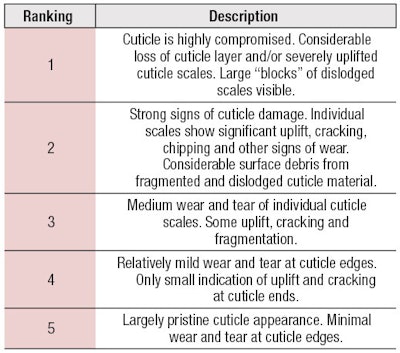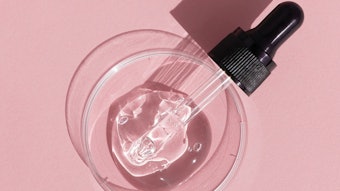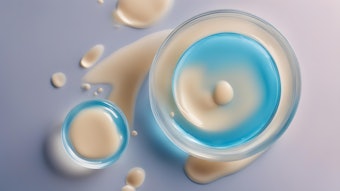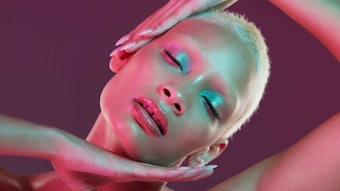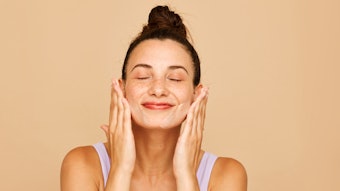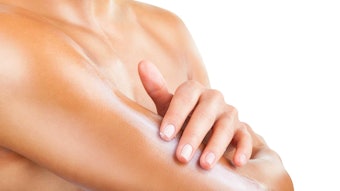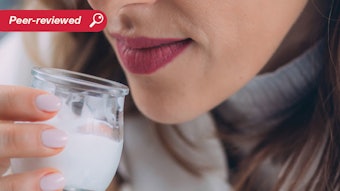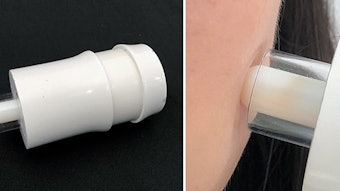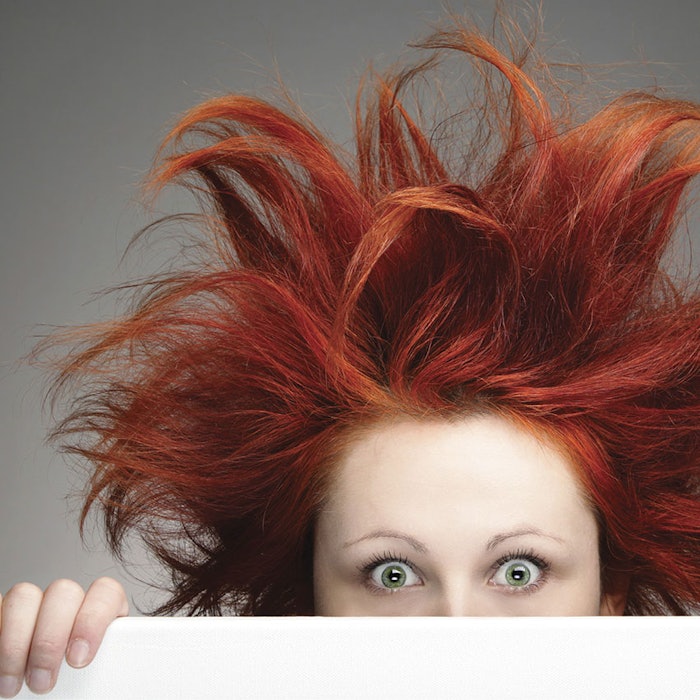
After 25 years in the hair care industry, not a day goes by that I don’t find myself marveling at the incredibly complex structure of hair. To most, the aesthetics and overall visual perception of the hair on their heads is the important factor, and the heart of an approximate $70 billion global industry—but, to the material scientist, a strand of hair is a remarkable natural biocomposite whose properties relate to a preponderance of hierarchic structural building blocks.
This perhaps begs the question: Why did nature evolve such a wondrously intricate material? The answer seemingly lies with the primordial function of hair—it appears plausible that hair protected the skin of our ancient ancestors from the sun’s harmful rays, while also keeping them warm. These protective properties necessitate considerable durability to take the rigors of the outside world while continual hair growth and a regular shedding cycle also help maintain this external barrier.
Mother Nature could never conceive the myriad ways by which hair is distressed in the name of beauty. We wash our hair in concentrated surfactant solutions and subject it to various chemical treatments to alter the shape and color; we dry and style it with heat and subject it to considerable abrasion during grooming. Not surprisingly, the hair structure becomes compromised and its properties change. This occurrence is often referred to by one all-encompassing consumer word: damage.
On a number of occasions, I've been asked to measure, “How damaged is that hair?” The breakdown of hair’s complex structure can occur in many ways and due to a variety of insults. So, it is impossible to describe the state of hair with a single number, or by a lone measurement technique.
This article is the first of three (see Part II and Part III) that explores ways of capturing and quantifying the different forms of hair damage. Here, we begin with damage to the hair surface, or cuticle, while also exploring the implications of this occurrence. A second article will focus on damage to the internal cortex structure.
A Picture is Worth a Thousand Words
The outer surface of hair is a series of overlapping tough and rigid scales collectively termed the cuticle. Think of it like shingles on the roof of a house, whose purpose is to provide a resistant outer layer that protects the more vulnerable inside. Individual cuticle scales are approximately 0.5 µm in height with 5–6 of these concentric layers typically present in healthy hair. Therefore, in the average 70 µm hair fiber, the cuticle represents about 8% of the diameter.
High magnification scanning electron microscopy (SEM) images provide a dramatic means of visualizing the degradation of this structure as a result of various insults. Figure 1 shows an image for relatively healthy hair, where individual cuticle scales are mostly intact and show minimal wear and tear. In stark contrast, Figure 2 shows hair with considerable cuticle uplift, while Figure 3 shows how, in extreme cases, this cuticle structure can be worn away.
While these images are striking, there is often a desire to ascribe numerical values to surface damage. To an extent, this can be performed by implementing a grading scale to describe surface condition. An example of a five-point grading scale is given in Table 1.
The downside of SEM is that each image shows a minutely small portion of a single fiber. Therefore, several positions on multiple fibers need to be examined to ensure that representative images are being acquired and considered.
Mother Nature could never conceive the myriad of ways by which hair is distressed in the name of beauty.
Mechanism of Cuticle Degradation
Newcomers to the industry are sometimes surprised to see little cuticle damage in hair tresses that have been freshly treated in the laboratory by various rather harsh chemical treatments. These products are generally thought to be high on the list of damaging insults, so this occurrence needs some contemplation.
It appears that these chemical treatments weaken hair fibers and put them at risk to further external rigors. Figure 4 shows a cross-sectional schematic through an individual cuticle scale to illustrate its hierarchical structure. Each scale has a laminate structure with increased cross-linking in layers approaching the hair surface.
Between each scale is the cell membrane complex (CMC). The pathway of materials into hair is debated to be through either the CMC alone,1 or both the CMC and the weakly cross-linked endocuticle.2, 3 Either way, this is a narrow pathway and emphasizes that incursion into the inner portions of the hair is not a trivial task. This spread of reactive chemical treatments through the CMC therefore weakens this intercellular “cement” between cuticle scales.
Chemical damage also causes notably greater levels of swelling when fibers are immersed in water. Each time hair is washed and dried, the cuticle structure must expand and contract to greater extents to accommodate the increased cortical dimensions; similar to the deterioration of roads in climates where temperature extremes lead to repeated thermal expansion and contraction.
In short, a weakened cuticle structure, in concert with exacerbated external rigors, leads to more rapid surface deterioration. Declining surface properties create additional friction amongst surrounding fibers during mechanical manipulation, i.e., grooming, which subsequently causes more surface abrasion and produces still more cuticle damage. A snowballing cycle is produced and hair properties quickly worsen.
Consumer Perception
The consumer knows nothing of the integrity of their cuticle structure—this is the language of the scientist—but tangible differences in the properties of hair manifest. The cuticle represents the very outermost surface of a hair fiber, so it is this structure that we feel when touching our hair. Clearly, very different feel properties would be anticipated for hair represented by the images in Figure 1 and Figure 2. Likely consumer descriptors would be smooth/rough, soft/coarse, healthy/damaged, etc.
A previous article4 discussed the interaction of light with the hair surface and its relation to consumer perception of shine. Light reflects cleanly off smooth surfaces and produces the sensation of shine. A clean, healthy cuticle structure therefore provides optimal conditions—but a duller appearance will accompany diminished integrity.
Frictional forces will also rise with deteriorating surface properties. The mundane, everyday task of brushing hair has considerable scientific complexity. During grooming, hair fibers are aligned by squeezing between the teeth of brushes and combs. A highly chaotic state must ensue as individual fibers twist, bend and slide past each other.
Snags possessing various degrees of persistence will form. Some may detangle almost instantly; others may unsnarl while being pulled down the length of the hair, or at the tips. Some will not readily detangle and create knots. The tendency for these situations will seemingly escalate dramatically with surface deterioration and increased roughness.
Figure 4 shows results from traditional instrumental combing experiments that illustrate this point. Here, a relatively mild bleaching procedure produced an approximate 20% increase in the dry state grooming forces, with a larger effect occurring in comparable wet state combing experiments due to additional contribution from enhanced fiber swelling.
Hair conditioners provide lubrication, which reduces frictional wear.
Products to the Rescue
“How do I get cuticle scales to lie down?” is perhaps the most common hair-related question I’ve gotten over the years. Unfortunately, nothing can be done. The term uplifted possibly implies that cuticles can be coaxed into lying back down but in reality they have been torn free from the underlying CMC “cement” and are fated to erode and dislodge via mechanical action. However, products can interrupt and mitigate the snowballing damage cycle described earlier.
The fundamental technical benefit provided by hair conditioners is surface lubrication, which greatly reduces frictional wear and tear. By means of illustration, the third set of data in Figure 5 shows how a conventional commercial rinse-out conditioner can dramatically lower dry state combing forces. Functionally, this benefit can be delivered by a variety of ingredients and product forms.
Traditional conditioner products are formulated using quaternary amine functionalized surfactants (quats) and co-surfactants (fatty alcohols) to form a lubricious lamellar liquid crystalline phase. Oils also provide lubrication, as can certain quaternary amine functionalized polymers (polyquats). Clearly, this lubrication must be delivered in an aesthetically pleasing manner and should not leave the hair with any sensorial negatives, i.e., greasiness or sliminess.
In this way, such ingredients and products help mask the effects of a degrading cuticle, while also slowing down deterioration rates. To the consumer, the hair feels better and is significantly more manageable. This alleviation of negative symptoms often prompts consumers to describe the hair as feeling repaired. Of course, technically, the combination of surfactants, oils and polymers does not physically repai anything.
This language is commonplace on products and in advertising claims, where it is usually recognized that the words refer to consumer vernacular, and not any true structural repair. With this said, I am asked at least once a month whether I can generate SEM images to show how a product or ingredient can flatten uplifted cuticle scales. An alternate strategy is to produce pictures that show how conditioning deposits smooth over a less-than-pristine cuticle surface (see Figure 6).
Conclusion
The remarkably complex and durable structure of hair is under constant bombardment by external rigors from the moment it egresses through the scalp. Progressive breakdown will ensue, with commensurate alteration in properties, at a rate heavily dictated by the habits and practices of the individual.
Mechanical agitation takes a particular toll on the hair surface, where friction, fatigue and abrasion all wear on the external cuticle layer. It is apparent how back-combing of hair—brushing or combing against the cuticle—is especially damaging. Traditional chemical treatments including perms, permanent color, relaxers, etc., are often thought to strongly influence the inner cortex but their pathway through the cuticle also weakens this structure. Therefore, while high magnification SEM images might not show immediate effects, the slippery slope to hair damage is steepened.
Surface lubrication, as provided by traditional conditioning products, can drastically lower friction and abrasion. This has the dual effect of slowing down surface damage progression while also smoothing over and masking existing irregularities. In consumer language, these are the origins of protection and repair claims.
Scanning electron microscopy provides dramatic illustrations of this surface breakdown. Mildly damaged hair might show visible wear and tear in otherwise relatively intact cuticle scales. In more extreme cases, cracks might appear, cuticle edges can become uplifted and dislodged, eroded cuticle debris becomes visible or the cuticle layer might be partially or even wholly removed.
The integrity of the cuticle therefore dictates the tactile properties of hair—but tensile properties such as strength, stiffness, etc., are controlled by the inner cortex structure. It has been reported that removing the cuticle does nothing to impact hair’s strength. This statement refers to controlled laboratory experiments but in real life, the absence of a cuticle leaves the vulnerable cortex exposed to the elements and an inevitable breakdown.
The next article in this series will delve into damage to the inner cortex structure.
References
- JD Leeder, Pathways for aqueous diffusion in keratin fibers, commentary, Tex Res J 69 229 (1999)
- FJ Wortmann, G Wortmann and H Zahn, Pathways for dye diffusion in wool fibers, Tex Res J 67 720-724 (1997)
- JA Swift, Pathways for aqueous diffusion in keratin fibers, additional commentary, Tex Res J 70, 277-278 (2000)
- TA Evans, Equating the measurement of hair shine, Cosm & Toil 131(1) 28-34 (Jan/Feb 2016)

